There is a myth that diaspora people, migrant workers in particular, are poor and are a big burden to their host nations. Nationals all too often view them as plunderers of resources, and usurpers of local-born labourers. Contrary to this popular but strong assumption is that many migrant workers build infrastructures and invest in the local economies of their host nations. Just visit the oil-rich Arabian Gulf states. Who do you think built these countries? These economic migrants come from all over the world – from Africa, Asia, Europe, Oceania, and even American continents, to build roads and buildings of all shapes and sizes. Furthermore, let’s think of the medical professionals, business people, company executives, etc. who have travelled to the West to supplement Western societies with their expertise. They are often the backbone of industries and many (though unfortunately, not all) are compensated well.
Dispel the myth that diasporas are a financial burden – they are working, living, and naturally spending in their host countries – stimulating their economies. I live near West Edmonton Mall, one of the world’s largest shopping centres and see the migrant workers there relaxing in the evenings and on the weekends obviously stimulating the Edmonton economy!
However, while working, living, and spending overseas, migrant workers are sending money home. In December 2011, the World Bank reported $351 billion in official migrant worker flows to developing countries in 2011. The top recipients of officially recorded remittances were India ($58 billion), China ($57 billion), Mexico ($24 billion) and the Philippines ($23 billion). Other top recipients were Pakistan, Bangladesh, Nigeria, Vietnam, Egypt and Lebanon. I quote the World Bank: “For the first time since the global financial crisis, remittance flows to all six developing regions rose” (TWB, Migration and Development Brief 17, Dec. 1, 2011). Their dollars are sent home to families for the education of their loved ones, to invest in real estate, to assist in developing the agriculture in their communities, to buy vehicles and build houses for their families, to support their local schools and healthcare initiatives. Remittances are sent home for relief work, and emergency assistance. Migrant worker dollars are received in their home countries and are used for needs as well as leisure – check out what their dollars buy at the shopping centres and markets of their homelands! Migrant worker dollars are also being sent home to their “spiritual homes” – their temples and churches, to their spiritual leaders, to their missionaries, and to their medical and dental missions, etc.
Do not get me wrong; I am not saying that individual migrant workers are well to do. Most have sacrificed proximity to loved ones just to help make ends meet. I am talking about diaspora peoples as collective groups – the power of their collective dollars. The migrant workers are in fact major contributors to their homelands and to their host nations abroad.
So what is my point? My point is that the migrant worker dollar is powerful. I’m not even touching on the diaspora community in general (which would include permanent immigrants, naturalized citizens, and even Second Generation immigrants who still support the homeland through remittances). I’m just talking about the billions of dollars that are sent home by the migrant workers. If you think about this huge number, you cannot help but think of missiological implications for the diaspora church.
What are some missiological implications? Allow me to pose four questions:
- Diaspora Congregations have money. What stewardship teaching are they receiving?
- They have billions of dollars in remittances, but what vision do they have for putting these dollars to work in Kingdom advancement? What missions initiatives do they support?
- Are diaspora congregations nurturing a Great Commission mindset?
- To what extent are partnerships between the homeland church and diaspora church being fostered?
In my last blog post, I admired William Carey’s dedication to going to the regions beyond, here, I want to add, and I admire his vision in a time of change. In William Carey’s time, the backdrop is the French Revolution and Industrial Revolution; “missions” was removed from the state agenda. European governments were ceasing to provide the financial backing to missions projects and missions became more an initiative of private groups and missions societies. I do not wish to draw too many parallels to William Carey’s life and times, but I do want to say that he lived and ministered in a time of momentous change. It was people – ordinary people – who fundraised for William Carey’s mission, not some huge moneyed organization. Our times are changing too. Migrant workers from the developing world are sending home billions of dollars. How can we encourage Christians in the diaspora to participate more actively in global missions?
Given affirmation and motivation, the diaspora congregations can be major contributors in supporting the global mission enterprise. Let us admonish the Diaspora Church to rise up as Kingdom Workers, support their missions projects, and be generous with their God-given resources.
Several Christian leaders have been asked to continue the conversation by responding to this lead article. Read their responses and share your own thoughts:
Sadiri Joy Tira (D.Min., D.Miss.) is the LCWE Senior Associate for Diasporas; Vice President for Diaspora Missions at Advancing Indigenous Missions (AIM); Director of the Institute of Diaspora Missiology at Alliance Graduate School (Philippines); and Diaspora Missiology Specialist at the Jaffray Centre for Global Initiatives at Ambrose University College (Canada).

